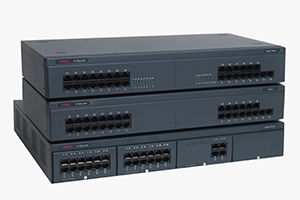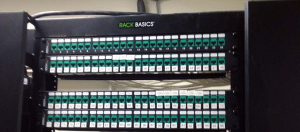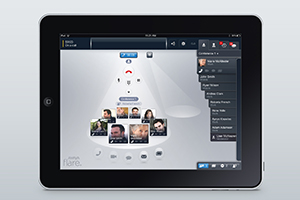SIP trunking the latest innovation in telecommunication technology. It works hand-in-hand with VOIP technology ![]() and is used for signaling and controlling multimedia communication sessions that can include audio, video, instant messages and data. Click here to learn more about SIP trunking.
and is used for signaling and controlling multimedia communication sessions that can include audio, video, instant messages and data. Click here to learn more about SIP trunking.
SIP trunking requires a certain level of hardware in order to function at the highest possible efficiency. This article will provide an overview the the hardware requirements of a system that utilizes SIP trunking. It is meant for IT managers and other technical managers at companies considering SIP trunking. Contact Network Telecom for any additional information regarding SIP trunking for your specific company. To read more on SIP trunking, click the link below.
- SIP Trunking vs VOIP vs Traditional Calling Systems
Network Telecom specializes in business communication technology and services in the Kitchener-Waterloo region of Ontario. Click here to contact us today.
 Deployment
Deployment
There are many things to consider when working towards installing hardware for use with SIP trunking. Best practices for the deployment of SIP trunking hardware include:
- Do proof-of-concept testing prior to deploying any new hardware in order to ensure that the needs for your business will be met by the new system.
- Define the different user groups/sites that will be deployed with SIP trunking capabilities. Do not compromise in any area. It is best to plan for future expansions in the form of multi-stage deployment.
- Decide which call flows will be included in each stage of a deployment. Different call flows include inbound, outbound, long distance, contact center and general business calls.
Network Design
A SIP network can be accomplished in any internet-connected network, but certain network designs lend themselves to increased features, speed and easy expansion. A well designed network that is going to be used for SIP communication should consider the following:
- Consider the benefits of a centralized versus a distributed SIP trunk design. A centralized design will be the obvious choice, but it may have certain design implications that will increase costs over the long term. A centralized network also poses problems when it comes to redundancy. If the power or network services are interrupted at the centralized location, it may pose a serious risk to business communication.
- Every network should have a minimum of two SIP trunk entry points. This is for redundancy reasons in case one of the entry points is disrupted. Medium and large networks should have the entry points at different geographic locations.
- A well designed network will allow for a wide range of IP addresses to be used for SIP services. Domain Name System (DNS) technology can help with offering a wider range of IP address choices.
- Load balance between the multiple IP addresses will allow for a more dynamic and flexible call routing and configuration system.
Protocol and Codec Choices
 Protocol and codec choices are a complicated design that depend greatly on the type of system you want to implement. For more information on which protocols and codecs to use, contact Network-Telecom today. Cisco offers the following information about protocol and codec choices.
Protocol and codec choices are a complicated design that depend greatly on the type of system you want to implement. For more information on which protocols and codecs to use, contact Network-Telecom today. Cisco offers the following information about protocol and codec choices.
Best practices in the area of protocol choices include:
- Use SIP end to end in your network if you can. Interoperability is easier and more flexible on SIP-to-SIP connections than translating to other protocols.
- If adhering to the previous guideline is not possible, use your SBC to interoperate H.323 destinations with your SIP trunk.
- Use RFC 2833, Dual-Tone Multifrequency (DTMF) Relay, throughout your network if possible. If not possible, make sure you understand where in your network translations occur between out-of-band signaling methods (such as the traditional H.323 methods) and DTMF, which travels in the media stream. The device (such as a call agent or SBC) that does this conversion must have access to both the signaling and the media streams to do the conversion.
- Investigate DTMF payload type value assignments on your own call agents, endpoints, and applications, as well as the values the service provider uses. Conversion or interworking among these values may be needed on your SBC to ensure proper interoperation of calls.
- Using T.38 fax relay for fax-over-IP transmission is technically a more robust method of faxing and works better than other methods where available. But it is not available on all networks and to all endpoints, so fax passthrough (or fax through G.711) is still widely used because it interoperates easier and with more endpoints. If your provider offers T.38, investigate if failover to G.711 fax is offered as a secondary call negotiation service to connect calls to destinations that may not yet support T.38. Consider keeping fax on
 TDM trunks for a while longer if faxing is a critical part of your business.
TDM trunks for a while longer if faxing is a critical part of your business. - Similar to the previous point, keep modem, POS, and telecommunications devices for the hearing impaired (TDD) traffic on TDM trunks for the present. SIP trunk technology is not ready to carry these traffic types reliably and predictably.
- Strongly consider getting G.711 service on your SIP trunk. Although it uses more bandwidth than G.729, it does not compromise voice quality (after all, SIP trunk technology is supposed to improve PSTN services, not worsen them). It also eases fax concerns, obviates the need for transcoding at your SBC, and better positions you for new SIP trunk services that will almost certainly include increasingly bandwidth-intensive applications such as high-fidelity wideband codecs and video. Dimensioning your network for G.711 call bandwidth now positions you better for future G.722 service, which offers much better voice quality at the same bandwidth use and is likely the first wideband codec to be offered on SIP trunks in the future.
- Although SIP is a standard protocol, it actually consists of a large number of individual standards (IETF Request for Comments [RFC]), and these RFCs have many optional components, as well as alternative ways of implementing the same call flow. SIP interoperability is not mature enough that all applications predictably interwork with other SIP applications, even though they all may be standards-compliant. This situation means you may need tools to normalize (that is, manipulate) SIP messages as they flow through your network from your applications across the SIP trunk to the PSTN. Investigate these tools (generally available on call agents, SIP proxies, and SBCs) to see which will meet your needs and where in the network is the best place to do these manipulations to ensure transparent interoperability with all your applications.
Conclusion
Selecting the best type of hardware for SIP trunking is a decision that should not be taken lightly. Different hardware and network types will change the speed, efficiency, expansion capabilities and redundancy of the network that your SIP services utilize. For more information on SIP trunking and to inquire about what type of network is best, contact Network Telecom today.
On the day of our cut over, Shirley and her technicians Dan and Bill were efficient, answered all of our questions and have done a wonderful job on follow-up.
-Ian R., P.Ag., CANWEST DHI

